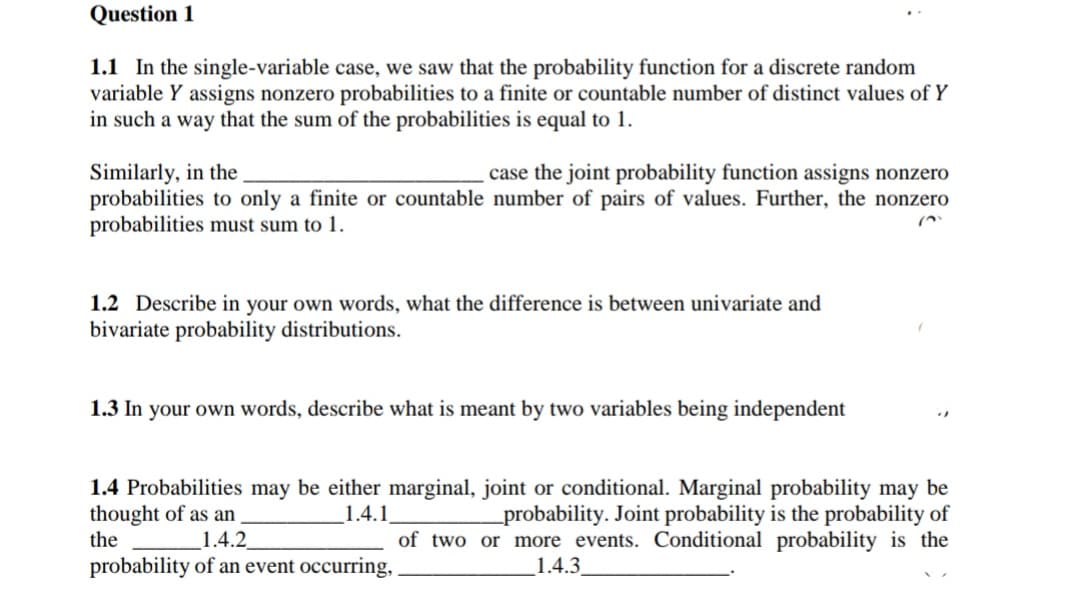single-variable case, we sa assigns nonzero probabiliti ay that the sum of the proE n the s to only a finite or cour
single-variable case, we sa assigns nonzero probabiliti ay that the sum of the proE n the s to only a finite or cour
Algebra and Trigonometry (MindTap Course List)
4th Edition
ISBN:9781305071742
Author:James Stewart, Lothar Redlin, Saleem Watson
Publisher:James Stewart, Lothar Redlin, Saleem Watson
Chapter14: Counting And Probability
Section14.2: Probability
Problem 3E: The conditional probability of E given that F occurs is P(EF)=___________. So in rolling a die the...
Related questions
Question

Transcribed Image Text:Question 1
1.1 In the single-variable case, we saw that the probability function for a discrete random
variable Y assigns nonzero probabilities to a finite or countable number of distinct values of Y
in such a way that the sum of the probabilities is equal to 1.
Similarly, in the
probabilities to only a finite or countable number of pairs of values. Further, the nonzero
probabilities must sum to 1.
case the joint probability function assigns nonzero
1.2 Describe in your own words, what the difference is between univariate and
bivariate probability distributions.
1.3 In your own words, describe what is meant by two variables being independent
1.4 Probabilities may be either marginal, joint or conditional. Marginal probability may be
thought of as an
the
1.4.1
_probability. Joint probability is the probability of
of two or more events. Conditional probability is the
1.4.2
probability of an event occurring,
1.4.3
Expert Solution
This question has been solved!
Explore an expertly crafted, step-by-step solution for a thorough understanding of key concepts.
Step by step
Solved in 4 steps

Recommended textbooks for you

Algebra and Trigonometry (MindTap Course List)
Algebra
ISBN:
9781305071742
Author:
James Stewart, Lothar Redlin, Saleem Watson
Publisher:
Cengage Learning

College Algebra
Algebra
ISBN:
9781305115545
Author:
James Stewart, Lothar Redlin, Saleem Watson
Publisher:
Cengage Learning

Algebra & Trigonometry with Analytic Geometry
Algebra
ISBN:
9781133382119
Author:
Swokowski
Publisher:
Cengage

Algebra and Trigonometry (MindTap Course List)
Algebra
ISBN:
9781305071742
Author:
James Stewart, Lothar Redlin, Saleem Watson
Publisher:
Cengage Learning

College Algebra
Algebra
ISBN:
9781305115545
Author:
James Stewart, Lothar Redlin, Saleem Watson
Publisher:
Cengage Learning

Algebra & Trigonometry with Analytic Geometry
Algebra
ISBN:
9781133382119
Author:
Swokowski
Publisher:
Cengage